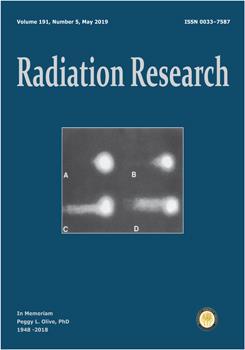Jackson,. I. L., Gibbs, A., Poirier, Y., Wathen, L., Eley, J., Draeeger, E., Gopalakrishnan, M., Benjamin, B. and Vujaskovic, Z. Hematological Effects of Non-Homogenous Ionizing Radiation Exposure in a Non-Human Primate Model. Radiat. Res. 191, 428–438 (2019).
Detonation of a radiological or nuclear device in a major urban area will result in heterogenous radiation exposure, given to the significant shielding of the exposed population due to surrounding structures. Development of biodosimetry assays for triage and treatment requires knowledge of the radiation dose-volume effect for the bone marrow (BM). This proof-of-concept study was designed to quantify BM damage in the non-human primate (NHP) after exposure to one of four radiation patterns likely to occur in a radiological/nuclear attack with varying levels of BM sparing. Rhesus macaques (11 males, 12 females; 5.30–8.50 kg) were randomized by weight to one of four arms: 1. bilateral total-body irradiation (TBI); 2. unilateral TBI; 3. bilateral upper half-body irradiation (UHBI); and 4. bilateral lower half-body irradiation (LHBI). The match-point for UHBI vs. LHBI was set at 1 cm above the iliac crest. Animals were exposed to 4 Gy of 6 MV X rays. Peripheral blood samples were drawn 14 days preirradiation and at days 1, 3, 5, 7 and 14 postirradiation. Dosimetric measurements after irradiation indicated that dose to the mid-depth xiphoid was within 6% of the prescribed dose. No high-grade fever, weight loss >10%, dehydration or respiratory distress was observed. Animals in the bilateral- and unilateral TBI arms presented with hematologic changes [e.g., absolute neutrophil count (ANC) <500/ll; platelets <50,000/ll] and clinical signs/symptoms (e.g., petechiae, ecchymosis) characteristic of the acute radiation syndrome. Animals in the bilateral UHBI arm presented with myelosuppression; however, none of the animals developed severe neutropenia or thrombocytopenia (ANC remained >500/µl; platelets >50,000/µl during 14-day follow-up). In contrast, animals in the LHBI arm (1 cm above the ilieac crest to the toes) were protected against BM toxicity with no marked changes in hematological parameters and only minor gross pathology [petechiae (1/5), splenomegaly (1/5) and mild pulmonary hemorrhage (1/ 5)]. The model performed as expected with respect to the dose-volume effect of total versus partial-BM irradiation, e.g., increased shielding resulted in reduced BM toxicity. Shielding of the major blood-forming organs (e.g., skull, ribs, sternum, thoracic and lumbar spine) spared animals from bone marrow toxicity. These data suggest that the biological consequences of the absorbed dose are dependent on the total volume and pattern of radiation exposure.





